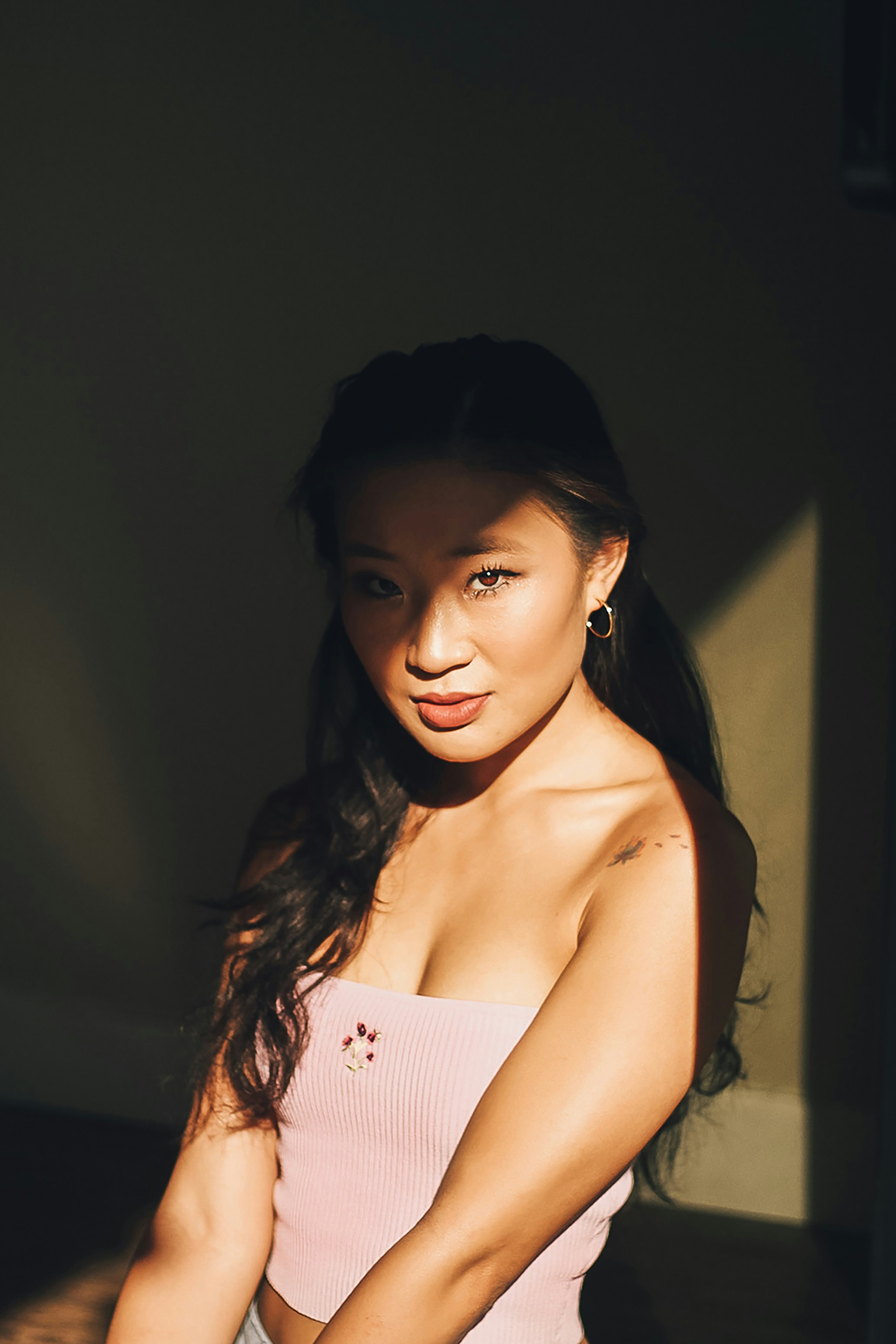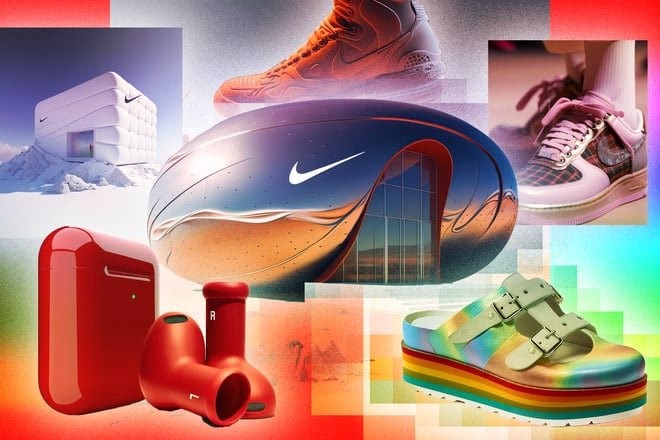
From #Ad to Authenticity: Why UGC has carved it's own path alongside Influencer Marketing
Written By Loft Social
Y2k was a time of huge technological innovation, and with this we saw a natural pivot from traditional advertising like tv, print and radio; to online. The cyber-giant that is Meta, enables e-commerce to thrive; giving brands more power than ever to target, communicate with, and convert their audience through to purchase on an unprecedented scale. Influencers inevitably ensued, and so too the era of influencer marketing.
Influencers were (and continue to be) a key consideration in a brand’s marketing strategy. They could promote products without accountability, to an audience oblivious to the intrinsic nature of the content. However, new advertising laws in 2021 and the resulting #ad movement meant that the veil of false endorsement had been lifted. Influencers could still play in the social media sandbox; but under the watchful eye of a consumer who now demanded transparency in a bid to regain (some) control in what’s always been an ambiguous space.
The resulting pressure on brands has been to fill the void with something that the influencer can’t; a relatable voice who speaks to the brand from a place of true, shared experience. Believability is key, and the perceived efficacy of influencer campaigns are clearly being challenged as UGC presents itself as a viable alternative for brands. So much so, that reporting from TIDAL shows that over 90% of marketers believe consumers trust user generated content more than influencer content.
So why is this? Have we unintentionally produced a generation of hard to please consumers who need to be entertained in order to purchase? It could well explain why traditional influencer campaigns, repetitive and sometimes insipid in nature, have fallen out of favour. Audiences have, over time, become desensitized to the point that the messaging behind these sponsored posts aren’t as engaging as they once were, and no longer a proven performer for brands.
What makes UGC an appealing alternative? It’s proving itself a more reliable means of reaching audiences and generating higher click-through rates when considering ad performance. But the answer is much simpler than that. Put simply, brands need content (and lots of it).
The type of content that can be readily adapted to changing demands and offers consumers an honest portrayal of product benefits and, supposedly, real-life use.
Low-cost content that can respond to the fluidity that the market necessitates, without the undesirable connotations that plague the #ad.
In saying that, the distinction between Influencer and Creator is already beginning to blur. There’s a definite look and feel to UGC content, however for the purpose of variability, it has a lot to offer.
Brands can’t always rely on seasonal campaign shoots or influencer endorsements to meet their content needs. Instead, they must arm themselves with an arsenal of content that can actively feed the insatiable appetite of its audience. They need to keep up with the revolving door of TikTok trends (which let’s be honest, influence the purchasing behaviours of 9999999% of Gen Z and beyond), and build a more authentic brand story through promoting more relatable content. People want to see themselves in a campaign, equal representation, and a brand that transcends its product offering. UGC can capture and represent en-masse, which isn’t impossible for the influencer, but harder when speaking from a place of privilege.
This isn’t to say that the era of the Influencer is over, it’s simply identifying an emerging need for a more diverse content portfolio. A need that UGC can meet, or support, with little investment and next to no risk.
Y2k was a time of huge technological innovation, and with this we saw a natural pivot from traditional advertising like tv, print and radio; to online. The cyber-giant that is Meta, enables e-commerce to thrive; giving brands more power than ever to target, communicate with, and convert their audience through to purchase on an unprecedented scale. Influencers inevitably ensued, and so too the era of influencer marketing.
Influencers were (and continue to be) a key consideration in a brand’s marketing strategy. They could promote products without accountability, to an audience oblivious to the intrinsic nature of the content. However, new advertising laws in 2021 and the resulting #ad movement meant that the veil of false endorsement had been lifted. Influencers could still play in the social media sandbox; but under the watchful eye of a consumer who now demanded transparency in a bid to regain (some) control in what’s always been an ambiguous space.
The resulting pressure on brands has been to fill the void with something that the influencer can’t; a relatable voice who speaks to the brand from a place of true, shared experience. Believability is key, and the perceived efficacy of influencer campaigns are clearly being challenged as UGC presents itself as a viable alternative for brands. So much so, that reporting from TIDAL shows that over 90% of marketers believe consumers trust user generated content more than influencer content.
So why is this? Have we unintentionally produced a generation of hard to please consumers who need to be entertained in order to purchase? It could well explain why traditional influencer campaigns, repetitive and sometimes insipid in nature, have fallen out of favour. Audiences have, over time, become desensitized to the point that the messaging behind these sponsored posts aren’t as engaging as they once were, and no longer a proven performer for brands.
What makes UGC an appealing alternative? It’s proving itself a more reliable means of reaching audiences and generating higher click-through rates when considering ad performance. But the answer is much simpler than that. Put simply, brands need content (and lots of it).
The type of content that can be readily adapted to changing demands and offers consumers an honest portrayal of product benefits and, supposedly, real-life use.
Low-cost content that can respond to the fluidity that the market necessitates, without the undesirable connotations that plague the #ad.
In saying that, the distinction between Influencer and Creator is already beginning to blur. There’s a definite look and feel to UGC content, however for the purpose of variability, it has a lot to offer.
Brands can’t always rely on seasonal campaign shoots or influencer endorsements to meet their content needs. Instead, they must arm themselves with an arsenal of content that can actively feed the insatiable appetite of its audience. They need to keep up with the revolving door of TikTok trends (which let’s be honest, influence the purchasing behaviours of 9999999% of Gen Z and beyond), and build a more authentic brand story through promoting more relatable content. People want to see themselves in a campaign, equal representation, and a brand that transcends its product offering. UGC can capture and represent en-masse, which isn’t impossible for the influencer, but harder when speaking from a place of privilege.
This isn’t to say that the era of the Influencer is over, it’s simply identifying an emerging need for a more diverse content portfolio. A need that UGC can meet, or support, with little investment and next to no risk.
Y2k was a time of huge technological innovation, and with this we saw a natural pivot from traditional advertising like tv, print and radio; to online. The cyber-giant that is Meta, enables e-commerce to thrive; giving brands more power than ever to target, communicate with, and convert their audience through to purchase on an unprecedented scale. Influencers inevitably ensued, and so too the era of influencer marketing.
Influencers were (and continue to be) a key consideration in a brand’s marketing strategy. They could promote products without accountability, to an audience oblivious to the intrinsic nature of the content. However, new advertising laws in 2021 and the resulting #ad movement meant that the veil of false endorsement had been lifted. Influencers could still play in the social media sandbox; but under the watchful eye of a consumer who now demanded transparency in a bid to regain (some) control in what’s always been an ambiguous space.
The resulting pressure on brands has been to fill the void with something that the influencer can’t; a relatable voice who speaks to the brand from a place of true, shared experience. Believability is key, and the perceived efficacy of influencer campaigns are clearly being challenged as UGC presents itself as a viable alternative for brands. So much so, that reporting from TIDAL shows that over 90% of marketers believe consumers trust user generated content more than influencer content.
So why is this? Have we unintentionally produced a generation of hard to please consumers who need to be entertained in order to purchase? It could well explain why traditional influencer campaigns, repetitive and sometimes insipid in nature, have fallen out of favour. Audiences have, over time, become desensitized to the point that the messaging behind these sponsored posts aren’t as engaging as they once were, and no longer a proven performer for brands.
What makes UGC an appealing alternative? It’s proving itself a more reliable means of reaching audiences and generating higher click-through rates when considering ad performance. But the answer is much simpler than that. Put simply, brands need content (and lots of it).
The type of content that can be readily adapted to changing demands and offers consumers an honest portrayal of product benefits and, supposedly, real-life use.
Low-cost content that can respond to the fluidity that the market necessitates, without the undesirable connotations that plague the #ad.
In saying that, the distinction between Influencer and Creator is already beginning to blur. There’s a definite look and feel to UGC content, however for the purpose of variability, it has a lot to offer.
Brands can’t always rely on seasonal campaign shoots or influencer endorsements to meet their content needs. Instead, they must arm themselves with an arsenal of content that can actively feed the insatiable appetite of its audience. They need to keep up with the revolving door of TikTok trends (which let’s be honest, influence the purchasing behaviours of 9999999% of Gen Z and beyond), and build a more authentic brand story through promoting more relatable content. People want to see themselves in a campaign, equal representation, and a brand that transcends its product offering. UGC can capture and represent en-masse, which isn’t impossible for the influencer, but harder when speaking from a place of privilege.
This isn’t to say that the era of the Influencer is over, it’s simply identifying an emerging need for a more diverse content portfolio. A need that UGC can meet, or support, with little investment and next to no risk.


